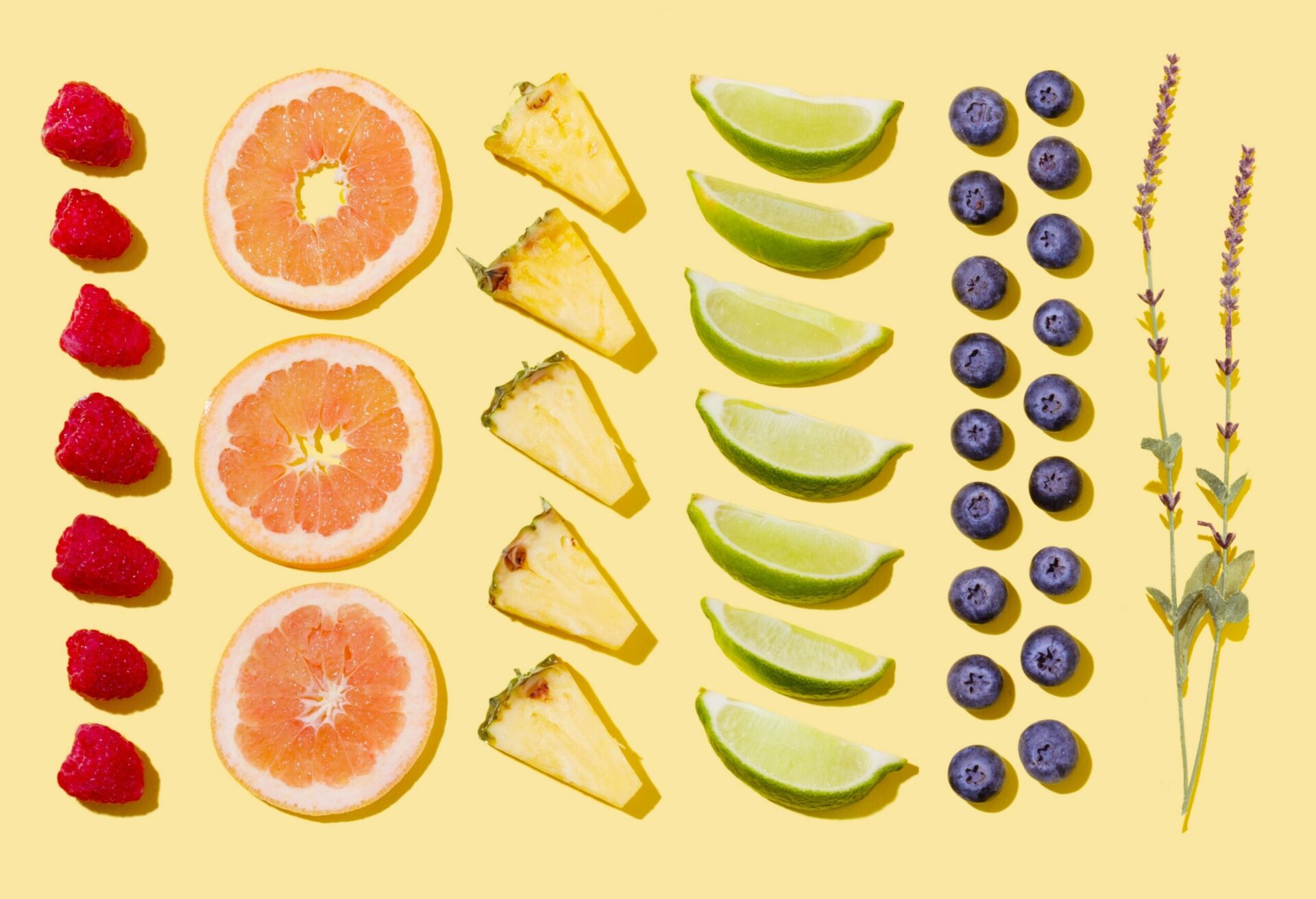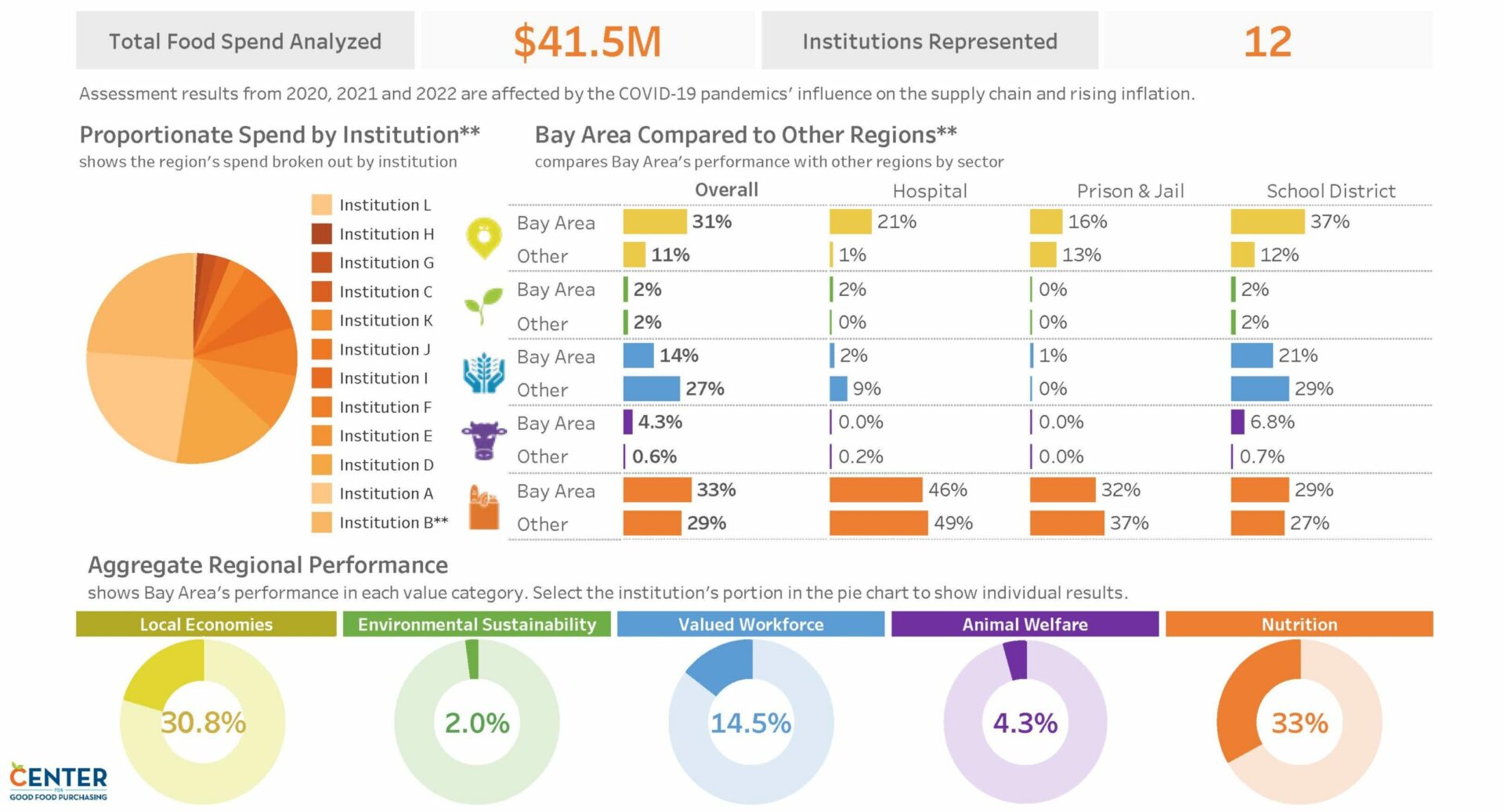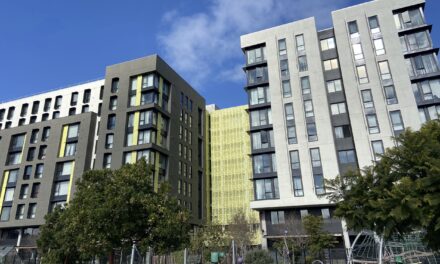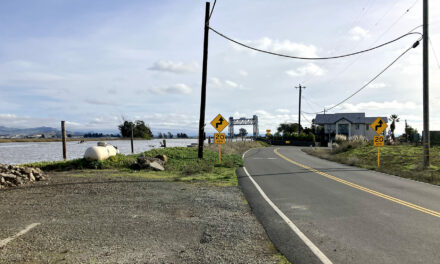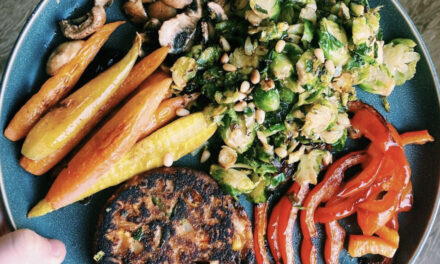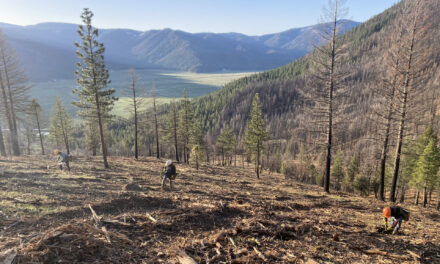Institutional Purchasing Power Directed To Good Food
Bay Area institutions and businesses, from schools to bakeries, are taking a close look at their food procurement practices to balance the needs of their communities and the environment. The Roadmap for Local Good Food Purchasing, released on October 17, is the latest step towards providing institutions with resources to procure food based on a values-based framework.
The San Francisco Bay Area Planning and Urban Research Association (SPUR) and the national Center for Good Food Purchasing (CGFP) released the roadmap to encourage greater adoption of the national Good Food Purchasing Program (GFPP). The GFPP provides a framework to inform the food procurement decisions of public institutions and focuses on five core values — supporting local economies, valued workforces, environmental sustainability, animal welfare, and community health and nutrition. The program aims to redirect the food budgets of public institutions toward a more sustainable, equitable, and transparent food system.
In the Bay Area, institutions began implementing the GFPP as early as 2016. However, to more holistically impact local institutional spending, SPUR and CGFP created the San Francisco Bay Area Local Food Purchasing Collaborative in 2021 with funding from the USDA Regional Food System Partnership grant.
According to Tiffany Cheung, CGFP’s Chief Operating Officer, the grant was integral to forming the new Bay Area collaborative. But actually implementing the framework was only possible with the combined support from local politicians, organizations like SPUR, and the food-purchasing institutions themselves.
“There was a lot of readiness in multiple sectors for this and a lot of investment in people,” Cheung says. “It’s really a cross-sector partnership that is needed.”
Bay Area performance under the framework to date. Note, supply varies by region and Bay Area institutions may benefit from being situated in the most productive agricultural state in the nation, making it easier to support local farms. Chart: Dashboard, CGFP.
The Bay Area collaborative is made up of 12 institutions including hospitals, schools, and correctional facilities. The institutions are aligning their combined spending on food — $40 million annually, according to SPUR — with good food purchasing values while also sharing learnings to inform procurement decisions.
“By taking this regional approach, it is not just one school district learning from another but it is a hospital learning from the school, learning from a correctional facility,” says Katie Ettman, Food and Agriculture Senior Policy Manager at SPUR.
Ettman explains that the values and principles of the GFPP are intentionally flexible so that they can be applied to meet the unique circumstances of any institution. And if an institution is not yet ready to adopt the full GFPP, they can still use the framework to make small changes.
“Some institutions haven’t adopted the Good Food Purchasing Program, [but] that doesn’t mean that they can’t make changes to procurement to build a better food system,” says Ettman. “Maybe it starts with one local product or changing one singular vendor.”
Ettman hopes that the roadmap and accompanying tools — which include sector-specific resources for hospitals, correctional facilities, and schools, as well as a dashboard to track regional progress towards implementing the GFPP — will entice more institutions to participate.
Other Recent Posts
Assistant Editor Job Announcement
Part time freelance job opening with Bay Area climate resilience magazine.
Training 18 New Community Leaders in a Resilience Hot Spot
A June 7 event minted 18 new community leaders now better-equipped to care for Suisun City and Fairfield through pollution, heat, smoke, and high water.
Mayor Pushes Suisun City To Do Better
Mayor Alma Hernandez has devoted herself to preparing her community for a warming world.
The Path to a Just Transition for Benicia’s Refinery Workers
As Valero prepares to shutter its Benicia oil refinery, 400 jobs hang in the balance. Can California ensure a just transition for fossil fuel workers?
Ecologist Finds Art in Restoring Levees
In Sacramento, an artist-ecologist brings California’s native species to life – through art, and through fish-friendly levee restoration.
New Metrics on Hybrid Gray-Green Levees
UC Santa Cruz research project investigates how horizontal “living levees” can cut flood risk.
Community Editor Job Announcement
Part time freelance job opening with Bay Area climate resilience magazine.
Being Bike-Friendly is Gateway to Climate Advocacy
Four Bay Area cyclists push for better city infrastructure.
Can Colgan Creek Do It All? Santa Rosa Reimagines Flood Control
A restoration project blends old-school flood control with modern green infrastructure. Is this how California can manage runoff from future megastorms?
San Francisco Youth Explore Flood Risk on Home Turf
At the Shoreline Leadership Academy, high school students learn about sea level rise through hands-on tours and community projects.
MORE
Fresh Food from Farm to Cafeteria,
Everyday Climate Champions Podcast
A KneeDeep Citizen Storytelling Partner






